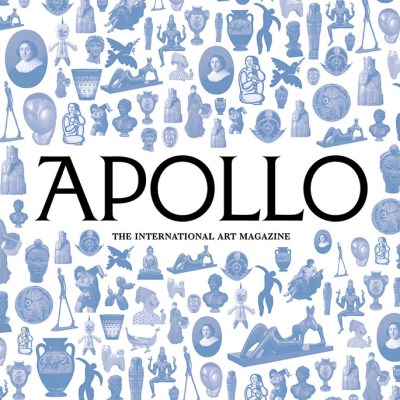To enter the Wael Shawky exhibition at the Serpentine Gallery is to be instantaneously transported into a magical realm of childhood. The door opens onto a spectacularly lit display case occupied with rows of delightfully grotesque ceramic marionettes, standing in lines as though stuck in a motionless queue.
These 24 puppets of men, women, children, animals, and hybrid creatures with human faces, have been exquisitely designed with fantastical, monstrously exaggerated features, evoking memories of childhood legends and myths, and arousing the desire to know – what are their stories?
Story-telling, myth, legend, history, and the complex relationship between them is at the heart of Shawky’s work, and these themes are richly explored in three of his recent films at the Serpentine. Two of these films, Cabaret Crusades: The Horror Show File (2010) and Cabaret Crusades: The Path to Cairo (2012) depict bloody episodes from the medieval Crusades enacted by marionettes.
Shawky’s use of puppetry and creation of a magical, timeless aesthetic through the golden-hued lighting and exquisite scenery, eases the journey into an inflammatory and contested period of history, while poignantly emphasising the discordance between the fairytale world of childhood and the often barbaric scenes of internecine slaughter, assassinations and cynical politicking within the Christian and Muslim camps.
This discordance blurs the boundaries between myth and fact and also begs the questions, whose voice is telling these stories and how does their perspective impact on the stories’ veracity?
Shawky gives this question greater urgency in the Horror Show File by using European puppets (200 year old Italian-made marionettes) to enact stories that were recorded by Muslim writers. This serves to remind us that there is no single, universally agreed version of history, and that there are other voices that are not always heard.
These awkward, stiff little marionettes are nonetheless surprisingly expressive, conveying panic, anxiety, fear and sorrow in a way that heightens the emotional impact of Shawky’s films. Their small stature, beautifully crafted detail and the miniature world they inhabit creates a sense of intimacy that cannot help but elicit empathetic engagement with their story.
We are irresistibly drawn in by the films’ other-worldliness, particularly The Path to Cairo with its more fantastical looking puppets that often break into song, as if in the midst of a musical. But if anything, our childlike wonder at these beautiful marionettes only underscores the all too dark and adult nature of their stories. There is no Punch and Judy hilarity to be enjoyed here.
In his most recent film, Al Araba Al Madfuna II (2013), Shawky plays once again with encounters between childhood and adulthood. In this re-telling of two Egyptian parables by the novelist Mohamed Mustagab, ‘Horsemen Adore Perfume’ and ‘The Offering’, child actors mouth the words of the script that are dubbed by adult voices.
Once again Shawky’s preoccupation with storytelling is at the heart of this starkly beautiful black-and-white film, shot in a village in Upper Egypt, in which a child, standing in for the traditional village elder (the boys wear moustaches to give a surreal edge to the substitution) recounts a tale to an assembled group of boys and girls.
‘The Offering’ is itself a story about stories, or rather, the loss of the power of storytelling, in which an entire village is deprived of the power of speech. The oneiric quality of the film makes for a curious, jarring viewing experience that is less enthralling than the puppet films, but the central message, about the timeless importance of narrative in how we understand ourselves and our place in the world, remains undiluted.
‘Wael Shawky’ is at the Serpentine Gallery until 9 February 2014.






